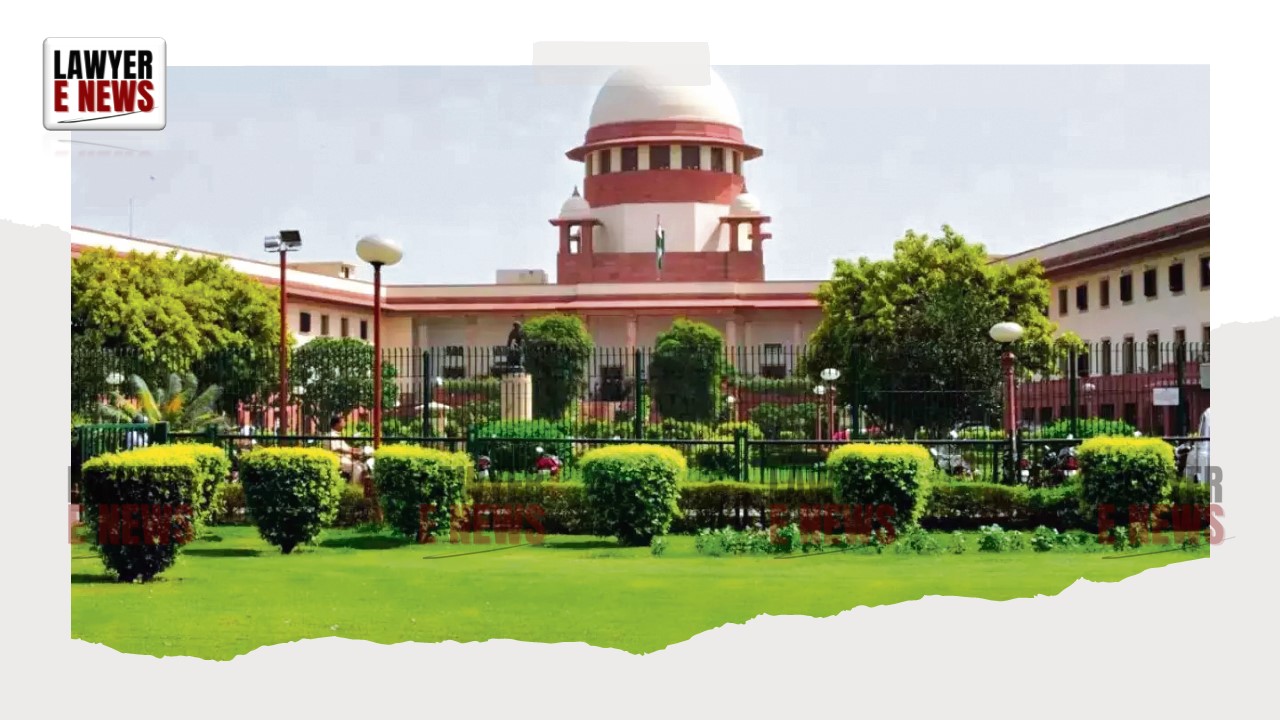-
by Admin
15 December 2025 3:42 AM



Pollution is a Continuing Wrong Until the Damage is Reversed – Supreme Court of India delivered a landmark ruling in the case of Vellore District Environment Monitoring Committee v. State of Tamil Nadu & Ors., reinforcing the Polluter Pays Principle and introducing the Government Pay Principle to hold authorities accountable for regulatory failures. The Court made it clear that polluting industries remain liable until full ecological restoration is achieved, directing the Tamil Nadu government to compensate affected individuals, recover costs from polluters, and take immediate steps to restore the environment in Vellore.
The Court observed, "The liability of industries for the pollution caused by them did not cease in 1998 merely by paying compensation. Rather, it is a continuing liability that persists until the actual pollution is curbed or its effects reversed."
The case arose from the severe pollution caused by tanneries in Vellore district, Tamil Nadu, where toxic industrial effluents were discharged into the Palar River, rendering agricultural lands infertile, contaminating drinking water sources, and causing widespread health issues among the local population.
In 1996, the Supreme Court, in Vellore Citizens Welfare Forum v. Union of India, had directed the creation of a Loss of Ecology Authority (LoEA) to assess damages and ensure compensation for affected individuals. The LoEA’s first award in 2001 identified 29,193 victims and assessed compensation for the period between 1991 and 1998. However, many affected families were left out, and despite the Supreme Court's earlier ruling, pollution in the region continued unchecked.
In 2009, the LoEA passed a second award, identifying 1,377 additional victims and determining compensation of ₹2.91 crore. This award was challenged by the Association of Indian Sewered and High Technology Manufacturers of Tanning Industry (AISHTMA), which argued that its liability ended in 1998 after paying ₹26.82 crore in compensation. The Madras High Court upheld the 2009 award but rejected further claims, leading to the current appeals before the Supreme Court.
The Supreme Court squarely rejected AISHTMA’s contention that its liability ended in 1998. The Bench observed, "Pollution is a continuing wrong, and industries cannot absolve themselves of responsibility merely by making one-time payments. The duty to compensate victims and restore the environment continues until the damage is fully reversed."
The Court reaffirmed that environmental responsibility cannot be evaded by regulatory inaction, stating, "The State, entrusted with the duty to protect both its citizens and the environment, cannot absolve itself of its failure to implement the law." The ruling emphasized that government inaction in enforcing pollution control laws does not excuse polluters from liability and introduced the Government Pay Principle to ensure that when authorities fail to regulate polluters, they must bear the consequences.
Relying on precedents such as Indian Council for Enviro-Legal Action v. Union of India (1996) and Tata Housing Development Co. Ltd. v. Aalok Jagga (2023), the Court held that enforcement agencies must be proactive in protecting the environment. The judgment also cited international examples from South Africa, Chile, and Ecuador, where governments have been held accountable for environmental failures.
The Supreme Court directed the Tamil Nadu government to immediately disburse compensation to all affected individuals as determined in the 2001 and 2009 awards and to recover the amounts from polluting industries through legal mechanisms, including proceedings under the Revenue Recovery Act. The Court held, "By applying the Government Pay Principle, it is for the Government to pay compensation to the affected individuals and recover the same from the polluters, until the damage caused to the ecology is fully reversed."
The judgment mandated the constitution of a High-Level Environmental Committee within four weeks, chaired by a retired High Court judge, to monitor compliance, assess claims for compensation beyond 1998, and formulate a comprehensive ecological restoration plan for the Palar River.
The Court took serious note of continued pollution despite prior judicial directives, stating, "The tanneries in Vellore have not yet achieved Zero Liquid Discharge (ZLD). The same level of pollution is present in wells and other water sources, indicating ongoing environmental damage."
The Court directed strict action against industries violating pollution norms and emphasized the need for real-time monitoring using IoT sensors and AI-based analysis to detect and penalize violations. It ordered the Tamil Nadu Pollution Control Board (TNPCB) and Central Pollution Control Board (CPCB) to ensure compliance and mandated quarterly inspections of tanning industries. The judgment also called for public disclosure of pollution levels every three days and the closure of industries that persistently violate environmental laws.
Highlighting the health hazards faced by tannery workers, the Court stated, "It would not be wrong to say that the condition of tannery workers is no better than that of manual scavengers. With a majority of workers being women, the situation is even more distressing." The Court directed industries to ensure worker safety, provide protective gear, conduct annual health checkups, and comply with labour laws.
The Court also criticized municipal authorities for failing to treat sewage, noting that untreated domestic sewage was being directly discharged into the Palar River. It directed the government to construct and operationalize Sewage Treatment Plants (STPs) in urban and peri-urban areas.
The Court further directed the formation of a District-Level Committee, headed by the District Magistrate, to ensure speedy resolution of pollution complaints, with a 30-day deadline for addressing grievances. It also mandated environmental audits of all rivers in Tamil Nadu and the publication of results in the public domain.
In its concluding remarks, the Court issued a stern warning against the destruction of natural ecosystems, stating, "It is disheartening to hear a worker describe the chemical pollution as ‘so powerful it can melt the dead – it’s only a matter of time before it begins to melt the living’." The Court stressed that regulatory failures, industrial negligence, and administrative inaction cannot be allowed to jeopardize public health and fundamental rights.
This judgment is a watershed moment in environmental jurisprudence, reinforcing that industries cannot escape liability merely by paying compensation while continuing to pollute. The introduction of the "Government Pay Principle" ensures that regulatory failures do not shield polluters from accountability.
The Supreme Court’s ruling is a strong message to industries and governments alike that environmental violations will not be tolerated, and victims of pollution must be compensated until full ecological restoration is achieved.
Date of Decision: January 30, 2025
